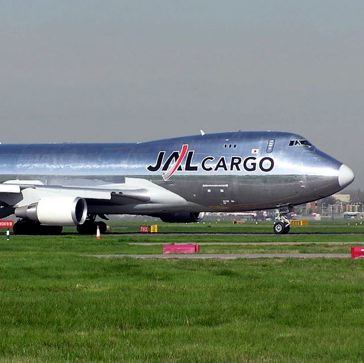 I lived through the 6.8 earthquake in Los Angeles in 1994 that lasted what I thought was an endless 28 seconds. In Japan, it was 5 minutes. I can’t even begin to fathom what that was like.
I lived through the 6.8 earthquake in Los Angeles in 1994 that lasted what I thought was an endless 28 seconds. In Japan, it was 5 minutes. I can’t even begin to fathom what that was like.
As you know, we’re seeing video footage giving us recorded history in ways we’ve never seen before. It’s sort of like watching it in slow motion, seeing these cars and boats completely devastated and thinking about the lives that have been lost.
In the first 36 hours, both Narita and Haneda airports were closed because they wanted to keep the runways open for emergency and relief flights.
Tokyo, which is served by those airports, is a major hub, and we take a lot for granted about how much is flown through Japan, in terms of both passengers and cargo. Those runways are open now.
But keep in mind there’s that lag time: there are planes out of sequence, flight crews out of sequence, planes have to get rotated back into system.
Related Links on PeterGreenberg.com:
My advice: In situations like this, think like a contrarian traveler. If you’re in Japan and want to come home, don’t fly eastbound, fly westbound. Throw the map out the window. Go to Hong Kong, Taipei or Bangkok, and then come back to the United States.
Don’t try to fly point to point back from Japan because you’ll be waiting on a very long line.
 The same thing applies to people trying to get to Japan. You have a better chance of getting there faster if you fly further west and double back. Fly to Hong Kong and double back to Japan because the load factors will be better.
The same thing applies to people trying to get to Japan. You have a better chance of getting there faster if you fly further west and double back. Fly to Hong Kong and double back to Japan because the load factors will be better.
Think about what’s been going on in the last couple of weeks, with the volcanic activity in Hawaii, the devastating earthquake in Christchurch and now what we’re seeing in Japan and the resulting fears around the world…
The bottom line is this is a serious recovery program that’s going to take a long time.
Some helpful resources:
The American Red Cross is donating funds to the Japanese Red Cross to support their earthquake and tsunami response. Click here to contribute.
USAid.gov has a list of NGOs accepting funds for Japan’s recovery efforts.
The National Volunteer Fire Council has set up a relief fund to help the Japan Firefighters Association in their relief and recovery efforts. All money raised goes directly to the Japan Firefighters Association.
Unfortunately, scammers always crop up in times of need.
Here are some tips from the Federal Trade Commission to make sure you’re donating to the right place. Some questions to always ask before giving:
- Ask for the charity’s name, address, and phone number, and written information about its programs.
- Ask whether the person contacting you is a professional fundraiser and how much of your contribution will go to fund-raising costs.
- Check the history of the organization with the office that regulates charities in your state.
Watch out for red flags such as:
- High-pressure pitches.
- A “thank you” for a pledge you don’t remember making.
- Requests for cash.
- Charities that offer to send a courier or overnight delivery service to collect your money.
- Charities that guarantee sweepstakes winnings in exchange for a contribution.
- Charities that spring up overnight, especially those that involve current events like natural disasters, or those that claim to be for police officers, veterans, or firefighters. They probably don’t have the infrastructure to get your donations where they need to go.
By Peter Greenberg for PeterGreenberg.com.
Related Links on PeterGreenberg.com:
- Flights Rerouted As Japanese Radiation Leaks Affect Airspace
- Japan Earthquake Update: Travel Advisory Issued
- 8.9 Earthquake in Japan: Assessing The Damage, Death Toll
- 100 Days Of Japanese Art: The Setouchi International Art Festival
- Natural Disasters section
- Japan Travel section












